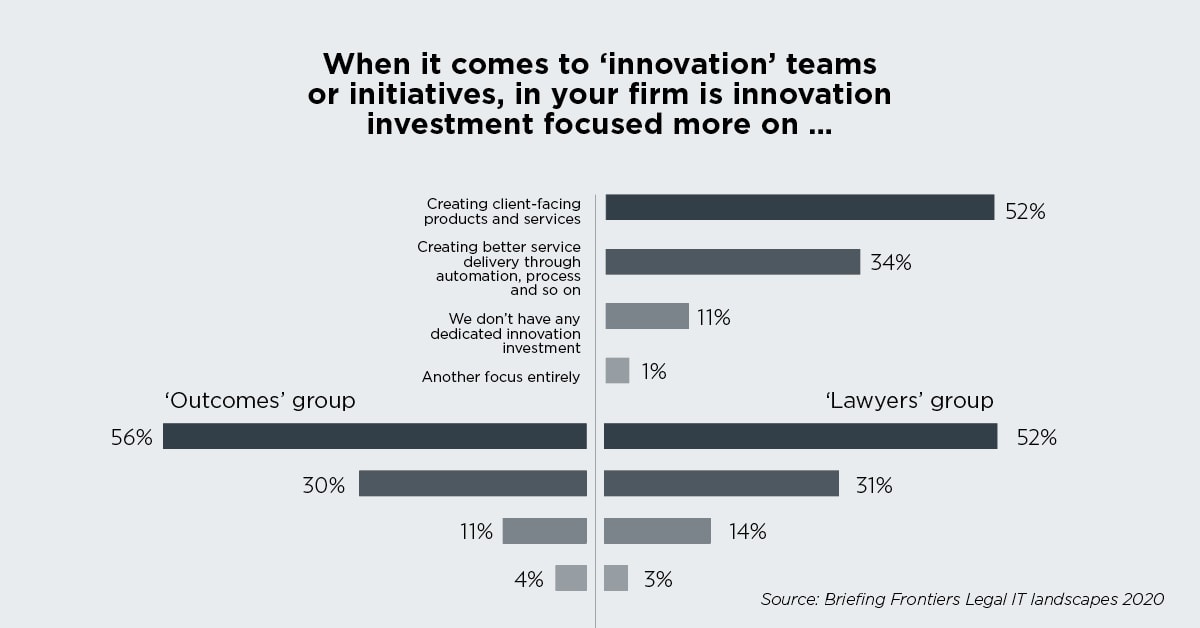Are innovation initiatives delivering the goods?
Innovation is the buzzword of our times – so overused (and perhaps misused) that many people think that it means nothing at all. Which is a shame, as firms are now investing in it, have leaders for it and have budget assigned to it.
But the approach to innovation, and the importance placed on it by firms, is by no means evenly spread across the landscape. This year, we wanted to find out how firms are organising their innovation efforts. The idea that innovation is as integral to the modern law firm as IT or finance is becoming more embedded, but not everyone agrees on where that ‘resource’ should sit.
At Capsticks, IT director Rod Fripp says that innovation sits with management, alongside special projects, but also that location doesn’t matter so much as having dedicated resources. “IT departments will naturally be more focused on business-as-usual tasks but, whether it’s there or elsewhere, the most important thing is that the resources and the headspace are there for innovation. It’s more important that the management of resources and priorities is right.”
David Halliwell, director of client solutions at Pinsent Masons, explains his perspective on the strategic placement of innovation: “I would love other firms to have it as a ringfenced ‘ivory tower’ unit, away from clients and fee earners – the further away from the frontline it is, the better it is for me because they’re my competition! It’s a good idea to centralise innovation to coordinate efforts but I don’t think it’s the best way to really change how service is being delivered.”
In all seriousness, he explains how he thinks innovation should shift over time: “Rather than allowing different parts of the business to make their own efforts, it initially makes sense to coordinate so you have a firm-wide approach – but once it’s more established, people won’t want to come to a central unit in order to get on with stuff. They want to have more responsibility themselves.”
However, in spite of some firms having a handle on where things should sit, it seems it’s not clear innovation should sit anywhere at all: 14% of respondents said that their firm didn’t ‘really’ have an innovation department (p17). And 21% weren’t even sure whether or not their firms had a dedicated innovation leader.
With all of this fuzziness, you’d be forgiven for getting rather hot under the collar. Innovation advocates can breathe a sigh of relief, however, when they see the results of our question on whether or not firms have a discrete budget for the function (above). Whereas almost half (48%) of respondents last year said ‘no’, their firm did not have a dedicated budget, a mere quarter (24%) repeated that sentiment this year. A decisive 74% said ‘yes’ to the question this year, compared with only 45% reporting a separate innovation budget last year, and the ‘don’t know’ camp has shrunk from 7% to a more palatable 3%. Such a shift can only be welcome news for those, like Fripp, who would emphasise the need to resource innovation adequately.
A degree of confusion may be down to pure semantics, says Halliwell: “Some firms are probably calling ‘innovation’ something else. You might have a significant technology budget, some of which will be devoted to research and development activities, but it wouldn’t necessarily be called an ‘innovation’ budget.”
Interestingly, if we sift through our data further and put it through the metaphorical centrifuge to see the difference between our outcomes- and lawyers-driven cohorts, we can see something interesting to chew on. A bigger slice of the leaders in ‘outcomes’ firms said yes to innovation budgets, with four-fifths (81%) reporting a discrete budget, compared with the two-thirds (64%) in ‘lawyers’-based firms.
This article can be found in Briefing report: Legal IT landscapes 2020.




